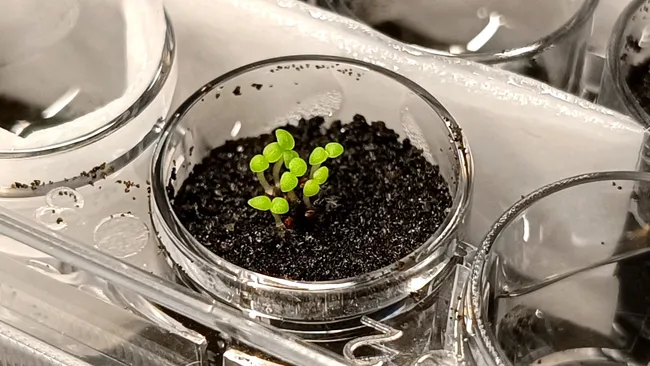Microbes could help unlock vital nutrients in lunar soil and one day help farms support lunar astronaut crews, according to a new study. Previous studies have shown that lunar soil contains many elements vital for plant growth. This has raised hopes that instead of astronauts having to transport large amounts of soil or large hydroponic systems from Earth, lunar greenhouse farms could use local resources to help lunar bases support life.
“The benefit of growing plants on the moon is not limited to providing food for astronauts living on the moon base,” study lead author Yitong Xia, from the China Agricultural University in Beijing, told Space.com. “It can also help freshen the air by providing oxygen, purifying water, and even providing emotional comfort.”
However, previous experiments have also shown that lunar soil is unsuitable for crops. Not only do they lack the carbon and nitrogen compounds necessary for plant growth, but vital elements such as phosphorus are often trapped in insoluble compounds that are difficult for plants to absorb.
“If we grow plants directly on the lunar regolith, their growth will be limited and they will die early,” Xia said.
In the new study, Xia and his colleagues explored ways to make lunar soil more fertile. They noted that Earth’s microbes have helped make our planet more livable for billions of years by physically and chemically converting solid rocks into porous, biologically active soil. According to Xia, sending microbes to the Moon to release insoluble elements would be much easier than bringing tons of these fertilizers there from Earth.
Researchers conducted experiments with Chinese volcanic dust whose composition was similar to samples collected by the Apollo 14 mission in 1971. They investigated whether five bacterial species could convert the insoluble phosphorus in this simulated lunar soil into a soluble form that could be used by plants.
“These bacteria are species commonly used in microbial fertilizers for agriculture,” Xia said.
Scientists mixed lunar soil samples with microbes in sugary broth for 21 days. They found that three bacterial strains more than doubled the amount of soluble phosphorus in 10-21 days. The microbes apparently helped the soil become more acidic by liberating phosphorus from the compounds it had trapped in it.
The researchers then grew a tobacco relative known as benth in simulated lunar soil treated with these three types of bacteria for 18 days. They found that after 24 days of growth, levels of chlorophyll, a pigment that helps plants capture energy from light, were nearly twice as high in plants with these live bacteria as in plants grown in simulated lunar soil with dead bacteria.
Additionally, plants grown for 18 days in simulated lunar soil with three bacteria tended to have longer stems and roots after six days of growth. They also tended to be heavier and had larger sets of leaves after 24 days of growth, compared to plants grown in simulated lunar soil with dead bacteria.
In the future, scientists want to mix these bacteria with algae or compost to see how it could further enhance plant growth, Xia said. Source













